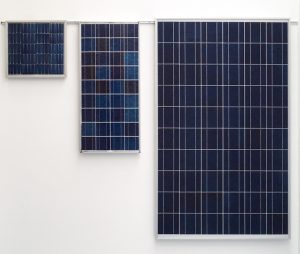New module formats and packaging challenges in distribution
 The global photovoltaic market has grown considerably in recent years. In concrete terms, this can already be seen in the preliminary product, the silicon wafer. Here, the expansion of production capacities in 2021 increased by an impressive 64 %. It is also evident that the supply is more diversified. Good profit margins have brought new market participants and driven both small and large companies to expand. Our module partners LONGI SOLAR at No. 1 and JINKO SOLAR at No. 3 among the world’s largest wafer manufacturers, together with Zhonghuan (No. 2) dominate global wafer capacity with more than 80%. Vertically integrated module manufacturers have also significantly increased their internal supply capacities. Thus, another 134 gigawatts of capacity could likely be added in 2022. (more…)
The global photovoltaic market has grown considerably in recent years. In concrete terms, this can already be seen in the preliminary product, the silicon wafer. Here, the expansion of production capacities in 2021 increased by an impressive 64 %. It is also evident that the supply is more diversified. Good profit margins have brought new market participants and driven both small and large companies to expand. Our module partners LONGI SOLAR at No. 1 and JINKO SOLAR at No. 3 among the world’s largest wafer manufacturers, together with Zhonghuan (No. 2) dominate global wafer capacity with more than 80%. Vertically integrated module manufacturers have also significantly increased their internal supply capacities. Thus, another 134 gigawatts of capacity could likely be added in 2022. (more…)
